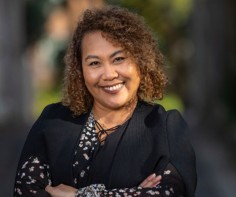
Karen Mundine, RA CEO
![]()
With the creation of this Stretch RAP, the NIAA continues to be a member of the ever-growing community of RAP organisations that have taken goodwill and transformed it into action.
![]()
On behalf of Reconciliation Australia, I congratulate the National Indigenous Australians Agency (NIAA) on its continued commitment to reconciliation, as it implements its first Stretch Reconciliation Action Plan (RAP).
Using the pillars of relationships, respect, and opportunities, the RAP program provides a framework for organisations to contribute to the reconciliation movement. With the creation of this Stretch RAP, the NIAA continues to be a member of the ever-growing community of RAP organisations that have taken goodwill and transformed it into action.
The NIAA sets the standard for what working with Aboriginal and Torres Strait Islander communities and stakeholders looks like for government. Consequently, an ability to formalise strong partnerships with First Nations groups and organisations has characterised the Agency’s reconciliation journey so far. Highlights include developing and implementing the Place Based Framework, as well as the instrumental role the NIAA played in bringing about the National Agreement on Closing the Gap. The efficacy of both of these initiatives is apparent in the relationships fostered by the NIAA, which in turn promotes best-practice partnership-building to the Commonwealth more broadly.
This Stretch RAP sees the NIAA embed and expand on these successes, to create further impact. It is continuing its focus on formalising structures around partnerships, with plans to integrate the co-design framework into its everyday, as well as promote it across the Commonwealth. The NIAA is using this Stretch RAP to sincerely invest in the education and capabilities of its staff and officers. It has plans to host two different speaker series for its employees: a monthly event on truth-telling and a quarterly event on different issues pertaining to reconciliation. It is continuing to test and develop its knowledge and ways of working, building two connections with overseas agencies to better understand how other countries increase outcomes for Indigenous peoples. These initiatives, among others, show the NIAA is taking thoughtful and considered steps to embed reconciliation into its work and across its sphere of influence.
On behalf of Reconciliation Australia, I commend the NIAA on this Stretch RAP and look forward to following its ongoing reconciliation journey.
Karen Mundine
Chief Executive Officer, Reconciliation Australia